Agiofarago: Crete’s hidden gorge in southern Crete
LOCAL GUIDECRETE UNCOVERED
Author: Tonia
3 min read
Agiofarago gorge and beach – far from the crowds, close to nature
If you love places where nature and history quietly meet, Agiofarago is one of Crete’s most special hidden spots. On the island’s southern coast, this peaceful gorge feels untouched by time. A gentle walk winds through rocky, wild scenery and leads to a pebble beach with clear blue water and tall cliffs.
The quiet, wild charm of Agiofarago makes you feel completely far from the world.
The story behind Agiofarago
The name Agiofarago means “gorge of the saints,” and it truly has a spiritual past. Long ago, hermits lived in the caves here, each in silence but connected by faith. Legend says about 300 of them gathered once a year in a cave called Goumenospilios to count their number and honor those who had died.
Near the end of the gorge stands a small stone church dedicated to Saint Anthony (Agios Antonios). The well beside it still holds water, just as it did for the hermits centuries ago. You’ll also find an ancient Minoan tomb nearby — proof that this peaceful place has been sacred for thousands of years.
Whether you come to hike, swim, or simply breathe in the stillness, Agiofarago reminds you what makes Crete so unique: raw nature, deep roots, and a peace that stays with you long after you leave.
Come not just to see it, but to feel it — to walk softly through history and let the Libyan Sea remind you how sacred simplicity can be.
Tonia ❤️
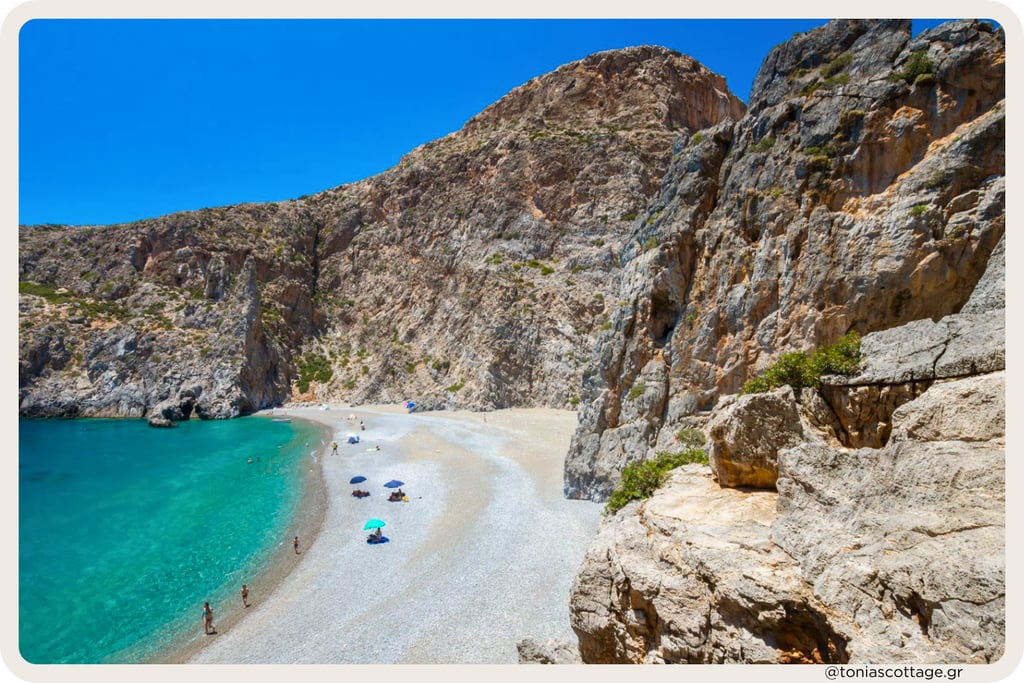

Walking through the gorge
The hike through Agiofarago is easy and about 1.5 km long (around 25–35 minutes). The rocky path winds between tall cliffs, with shade in some parts and beauty everywhere you look. Rock climbers will also find interesting routes along the walls.
You can check trail details and reviews on AllTrails before you go.
At the end of the path, you’ll reach Agiofarago beach, 1.5 km long, with pebbles and steep cliffs. Near the gorge exit, you might see people trying the climbing area. The clear blue water is usually calm, but swimming can be dangerous if it’s windy. Opposite the beach is the rocky islet Papadoplaka, where locals once collected sea salt, and the seabed is great for snorkeling. On the west side, a natural archway is perfect for a swim, like a small private pool.
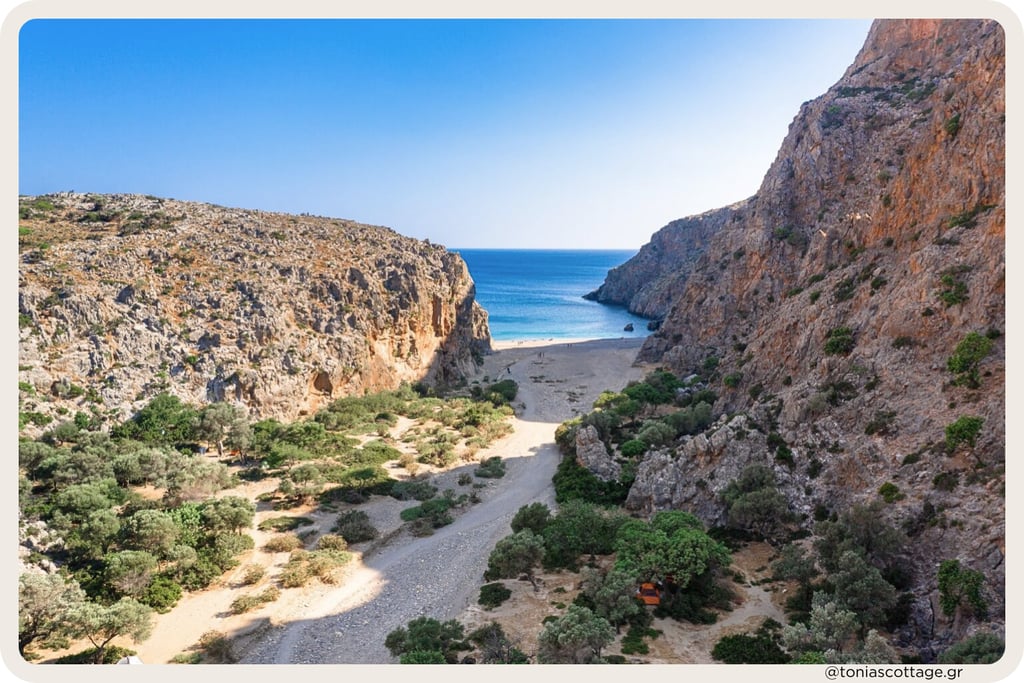

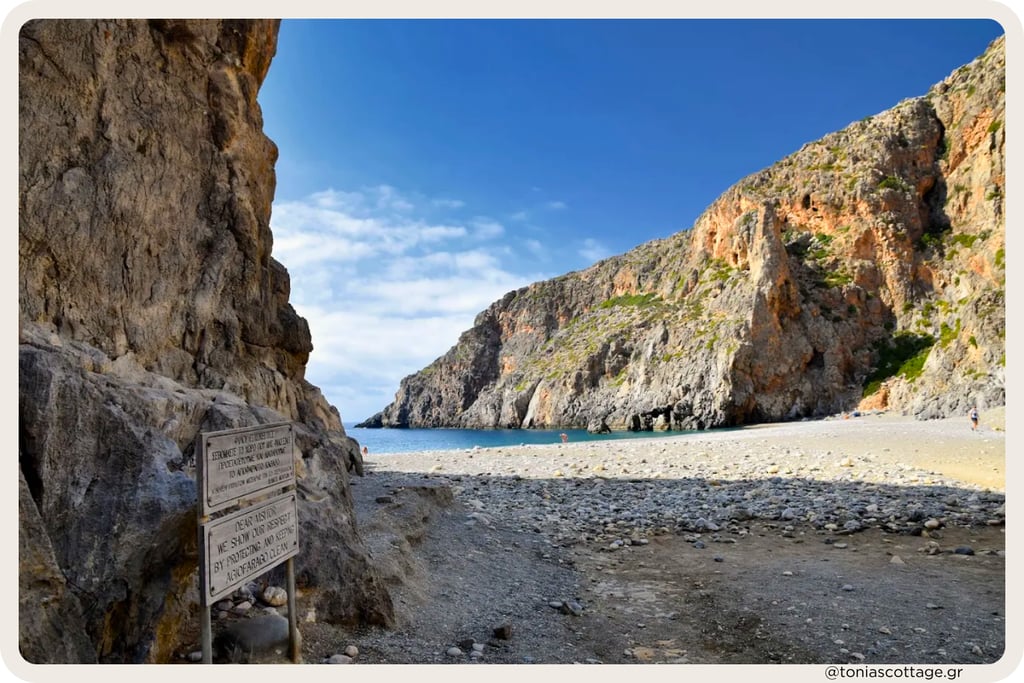

Before you go
Getting there:
Agiofarago is accessible by a dirt road that begins at the historic Monastery of Odigitria near Sivas, (about 80 km south of Heraklion) to which the territory belongs. The monastery itself is one of Crete’s oldest and worth a visit.
Continue right from the monastery, following the signs to Agiofarago, and drop into the gorge until you reach a dead end and a parking space and a small food truck called Kuna Muta. Avoid parking under trees, as goats may climb on your car.
From there, it’s a 30-minute walk through the gorge.
What to bring:
Wear sturdy shoes and bring water, snacks, and sun protection, there are no facilities here. If you enjoy swimming, pack a snorkel to explore the underwater world. There are no sunbeds or chairs on the beach, so make sure to bring your towel, food, drinks, and sunscreen.
Respect the place:
Agiofarago is both a natural and spiritual sanctuary. Nudism and camping are not allowed, and approaching the nearby Vourvoulitis pond is dangerous. Move gently and leave only footprints — the peace here depends on it.
Conservation note:
Agiofarago Beach and the surrounding area are part of the Agiofarago Martsalo Kefali protected area, managed by the regional authority of Crete. This designation preserves the natural environment and maintains the region’s ecological balance. Specific measures regulate human activities to minimize their impact. Limiting visitor access is a primary preservation method, with the beach’s remote location and requirement to hike through the gorge or arrive by boat naturally reducing visitor numbers. Educational initiatives and signage promote responsible tourism, encouraging visitors to follow “Leave No Trace” principles. Regular monitoring and cleanup efforts by local authorities and volunteers help maintain the beach’s pristine condition.
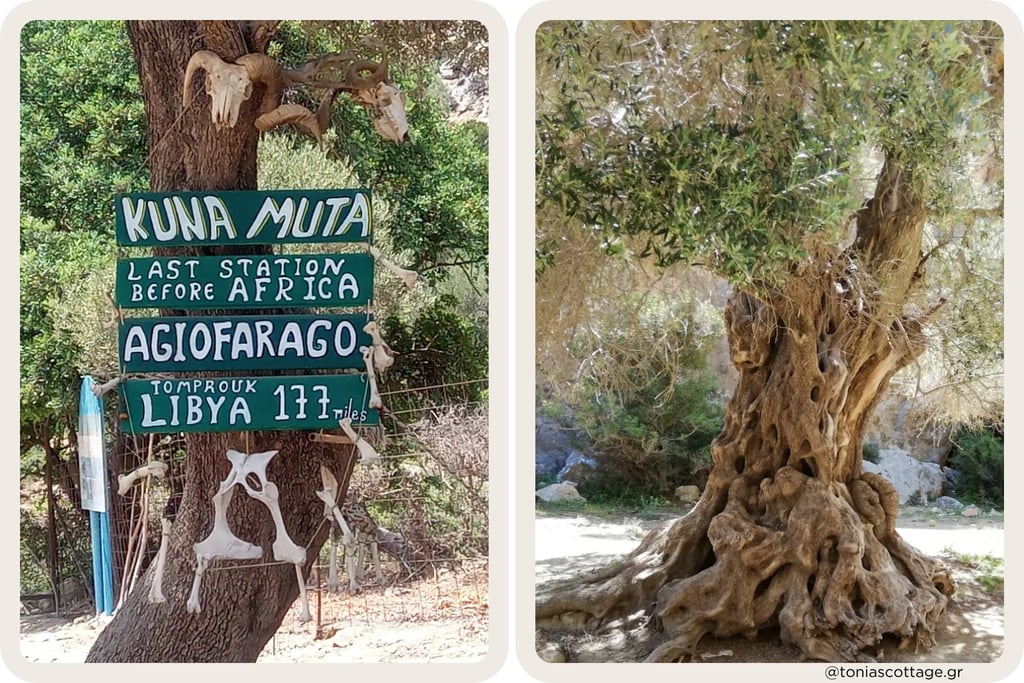

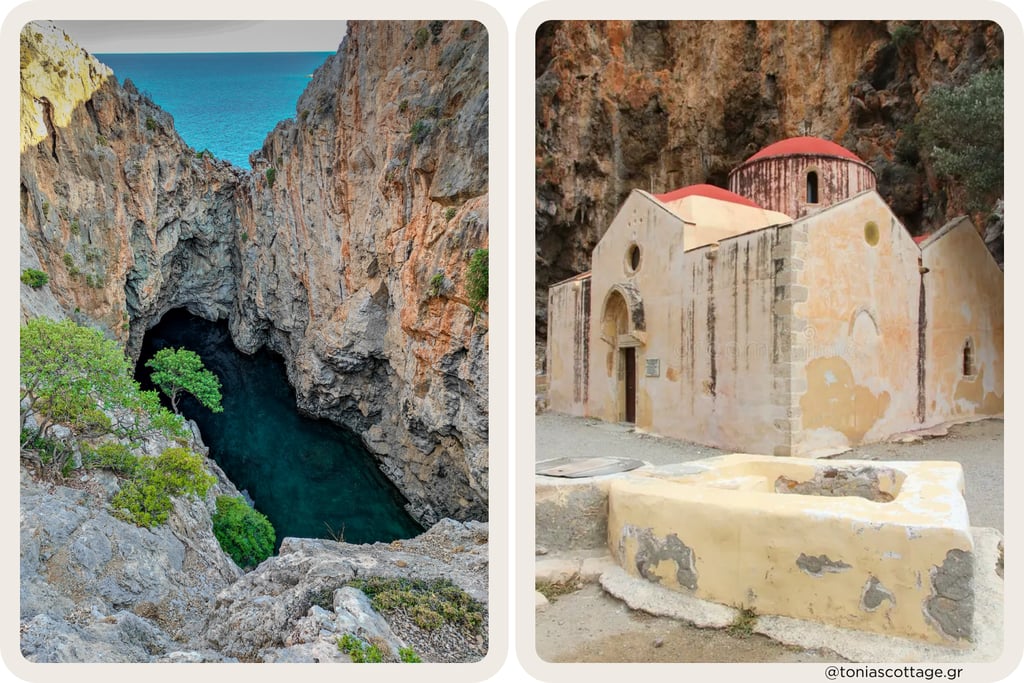

Address
Tonia’s Cottage
Alagni Village, 70300 Arkalochori
Crete Island, Greece
Contact details
(+30) 697 054 0969 (WhatsApp)
info@toniascottage.gr
https://linktr.ee/toniascottage
Made with ❤️
© 2024 Tonia's Cottage | All Rights Reserved
Airbnb | Booking.com | HomeToGo | Vrbo
Property Registration Number (AMA): 00002660089
